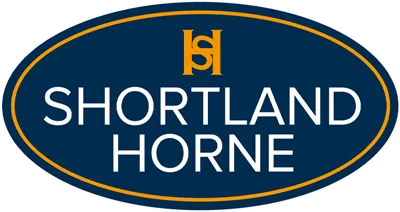If you’re thinking about selling your home or have just started the process, you might find yourself asking the question ‘what paperwork do I need?’ Knowing what essential documents you need and having them as prepared as possible will help ensure the entire sales process runs smoothly, while avoiding any unnecessary stress or delays. The experts at Shortland Horne have put together this handy checklist, so you know what paperwork will be required when selling your home.
Proof of identity
It might sound obvious but the first thing you should prepare is official proof of identity and proof of address – in short, this is so show that you’re not taking part in money laundering. You will need either your passport ot driving licence to prove your identify, along with the likes of a bank statement or utility bill (upto three-months-old), as proof of address.
Land registry title documents
These are documents that prove you own the property. These are stored digitally by HM Land registry and you should have been sent them when you originally purchased the property. If you can’t find them, you can:
- Check with your mortgage companyor solicitor to see if they have the original deeds
- Check with Land Registry and request a copy for just £3
As of the 1980s, it was decided by the government that all properties should be registered with the Land Registry. However, there is still a small percentage of properties that aren’t registered. If this is the case, then try not to worry – although it will make the process more complicated, it doesn’t make selling your home impossible. If your property isn’t registered, then seek advice from the team at Shortland Horne, and together, we can discuss the most appropriate steps for you to take.
Leasehold documents
When it comes to property, there are two main types of ownership:
- Freehold: This when you own the property and the land it sits on
- Leasehold: This applies when, instead of owning the land, you occupy a property on that land, like a flat or apartment. The lease will give you rights to use any communical areas, including the likes of parking spots and bike sheds
If your property is leasehold, or you retain a share of the freehold, then you’ll need the relevent documents related. This means downloading the leashold title register and plan, plus the freehold title register and plan.
A top tip from us is to give yourself a few weeks to get hold of this documentation, as it’s completely out of your hands and can be impacted by external agents and landlords working proactively together.
New build guarantees
If your property is a new build – or under 10 years old – then you will need to supply a copy of your Buildmark (NHBC), as well as any other new home policies or warranty documents you might have.
Certicates
There are mutiple certificates you’ll need to supply. These are:
- Energy performance certificate (EPC). This outlines the energy use of the property, as well as its CO2 impact. You should have got one of these when you purchased the property. If your EPC has expired, you will need to complete a new one before the sale can be completed
- Gas safety certificate
- Boiler safety certificate
- A FENSA certificate (if you have replaced any of the windows in the property)
- Electrical Installation Certificate (EIC). This will show all electrics were installed safely on-site
- Planning permission and building regulations certificates
Floor plan
This is a scale drawing of your house that shows the layout of all rooms and sizes. This will prove that the house being advertised is the same as what’s described in the title register.
Property Information Form (TA6)
Simply put, the TA6 is a questionnaire the gives detailed information about the property, including boundaries, disputes, insurance and utilities. Ideally, you should complete this before you put the property on the market – you can get a copy from a conveyancer.
Fittings and contents form (TA10)
This will outline what’s included in the sale price – and furthermore, what’s not included, including the likes of white goods, furniture and fittings.
Memorandum of sale (MOS)
Usually prepared by the acting estate agent, the MOS contains all the important details of a property transaction, including who the conveyancers are, as well as the buyers and sellers.
Contract for sale and property transfer deeds
Your conveyancer will prepare these, but you will need to check and sign them:
- The contract for sale included details of the buyers, sellers, address, agreed price and any conditions set
- A property transfer deed (or TR1) will legally transfer the ownership of the property to the new buyer
It’s worth noting that the conveyancer will prepare these around the time when you accept an offer on your house, but they won’t be ready for signing until you’re in a position to exchange.
Are you selling your home? Get in touch with the experts at Shortland Horne
Are you thinking about putting your home on the market? It’s time to get in touch with Shortland Horne.
We recognise that knowing what documents and paperwork to prepare when selling your house can seem incredibly overwhelming. At Shortland Horne, our honest and reliable team are committed to supporting you every step of the way, to make selling your home as stressfree as possible. Located in Coventry, we are an award-winning estate agent, here to help sell your home.
